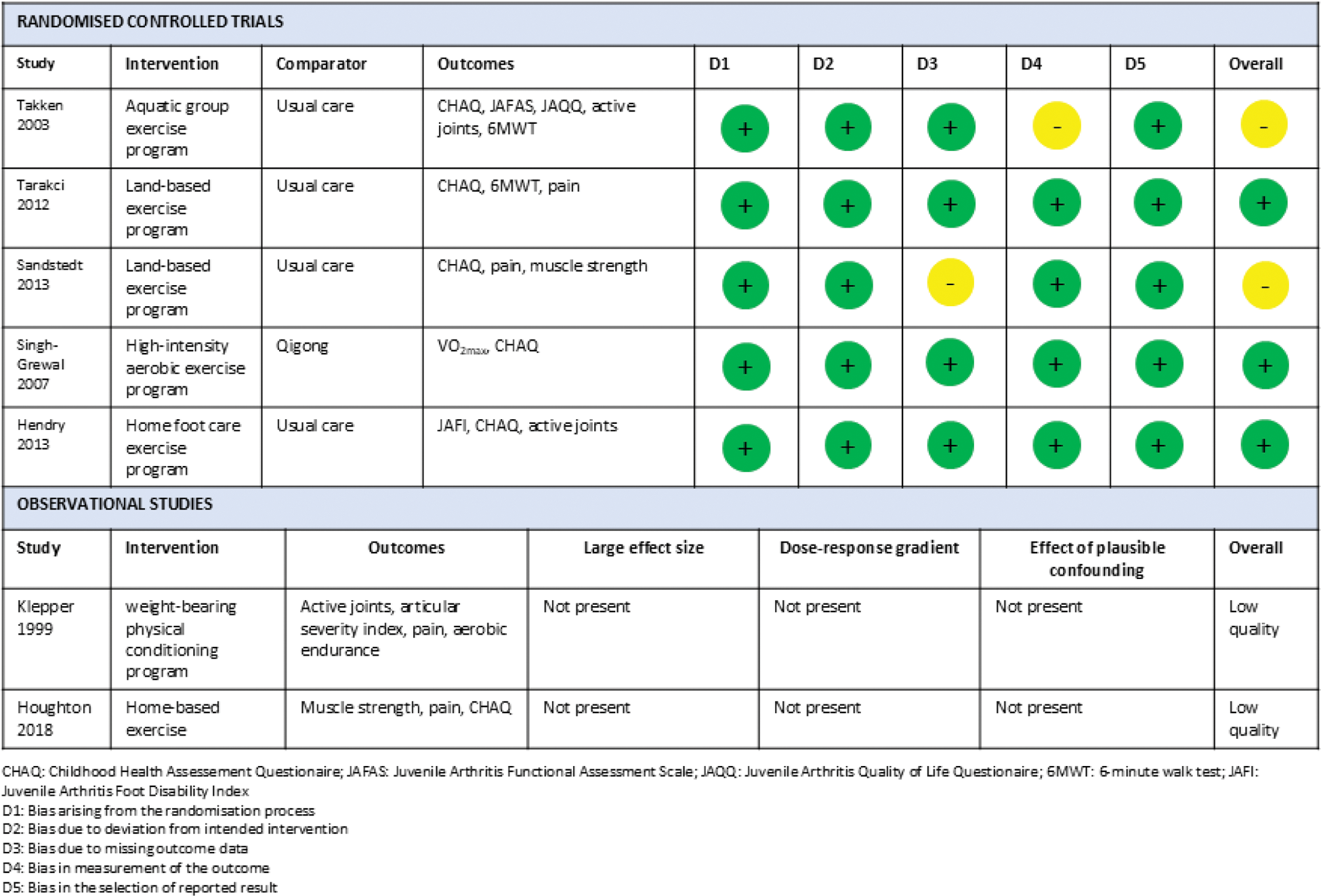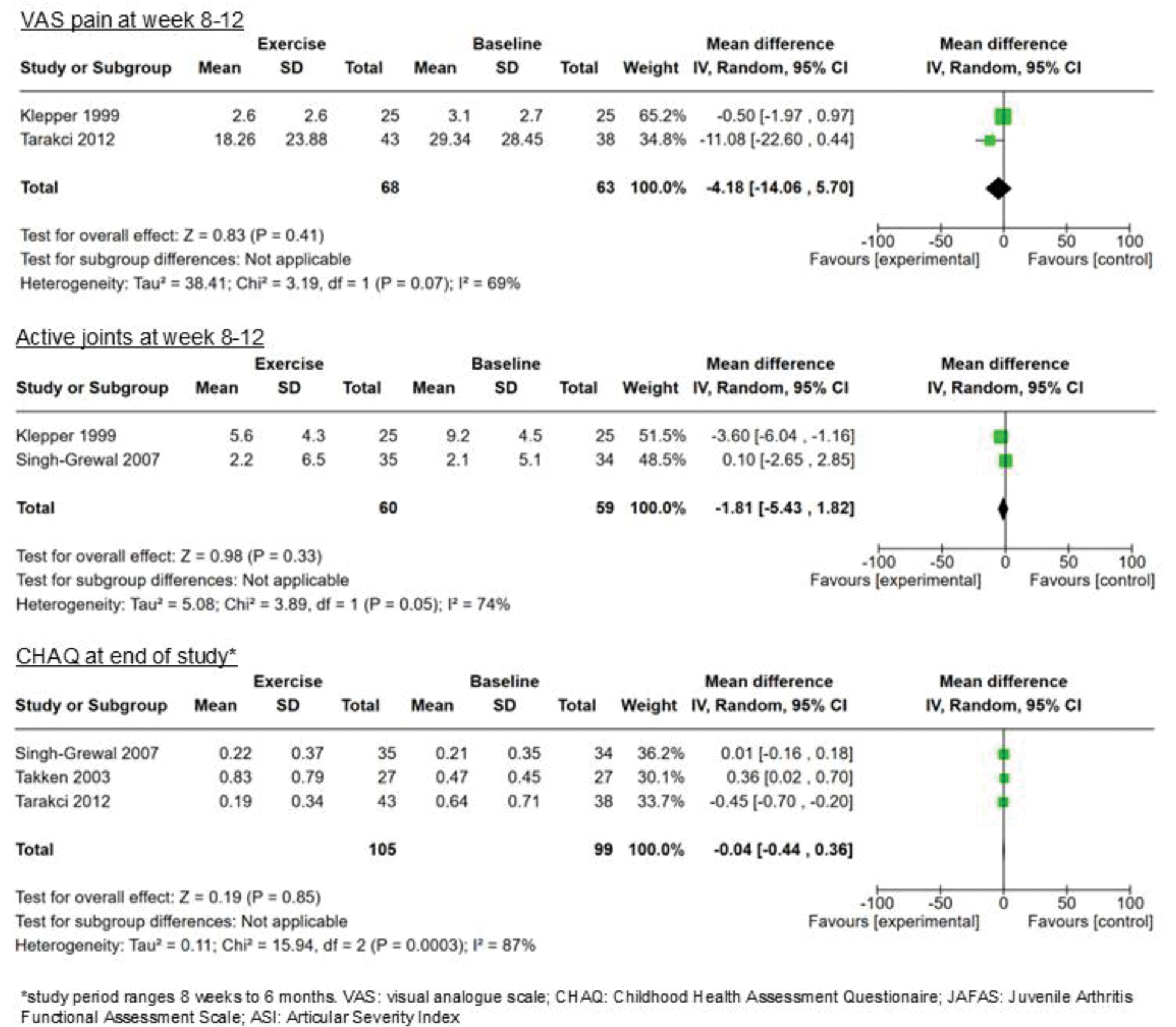

Background: Physical therapy (PT) is widely considered important in treating Juvenile Idiopathic Arthritis (JIA). However, a 2008 Cochrane review noted no significant evidence that it can improve functional ability, quality of life (QoL), aerobic capacity, or pain [1].
Objectives: To systematically review the latest evidence on the effectiveness of physical therapy on functional ability, quality of life (QoL), and symptoms in children and young adults (CYA) with JIA.
Methods: Systematic review was conducted according to the Preferred Reporting Items for Systematic Reviews and Meta-analysis (PRISMA) reporting guidelines. Terms related to PT and JIA were searched in PubMed, Embase, Scopus, Web of Science, and Cochrane Library from inception to August 2024. Grey literature and abstracts were also searched. Two independent reviewers identified, extracted data from, and critically appraised the included studies using the Cochrane Risk of Bias 2 (Rob2) tool. Conflicts were resolved via consensus. Randomized controlled trials (RCTs) and observational studies were included. Outcomes included quality of life, disease activity, functional ability, and pain. The overall certainty of the evidence was assessed using the GRADE approach.
Results: Of the 906 studies identified, 5 RCTs and 2 observational studies were included. One examined the effect of a prescribed aquatic fitness training program, while the rest examined the impact of land-based exercise training programs. The studies demonstrated significant heterogeneity due to differences in the intervention (duration, type, and intensity of programs), control group, and the time point of outcome assessment. Only one RCT demonstrated a significant difference in Juvenile Arthritis Quality of Life (JAQQ) scores and Juvenile Arthritis Functional Assessment Scale scores (JAFAS) using an aquatic fitness training program, and one observational study showed a decrease in mean articular severity index (ASI) and pain scores. The overall certainty of evidence ranges from very low to moderate.
Conclusion: Despite current guidelines recommending physical therapy in JIA patients, its effectiveness has not been well demonstrated [2]. The absence of a high-quality RCT evaluating the effect of physical therapy remains a notable gap. Further RCTs with robust methodological quality, larger sample size, and long-term follow-up are needed. Nonetheless, aquatic-based hydrotherapy appears to be effective in improving functional ability and quality of life.
REFERENCES: [1] Takken, T., et al. “Exercise therapy in juvenile idiopathic arthritis: a Cochrane Review.” Eur J Phys Rehabil Med 44.3 (2008): 287-297.
[2] Onel, Karen B., et al. “2021 American College of Rheumatology guideline for the treatment of juvenile idiopathic arthritis: recommendations for nonpharmacologic therapies, medication monitoring, immunizations, and imaging.” Arthritis care & research 74.4 (2022): 505-520.
List of studies and the risk of bias assessment

Forest plots for the included outcomes

Acknowledgements: NIL.
Disclosure of Interests: None declared.
© The Authors 2025. This abstract is an open access article published in Annals of Rheumatic Diseases under the CC BY-NC-ND license (